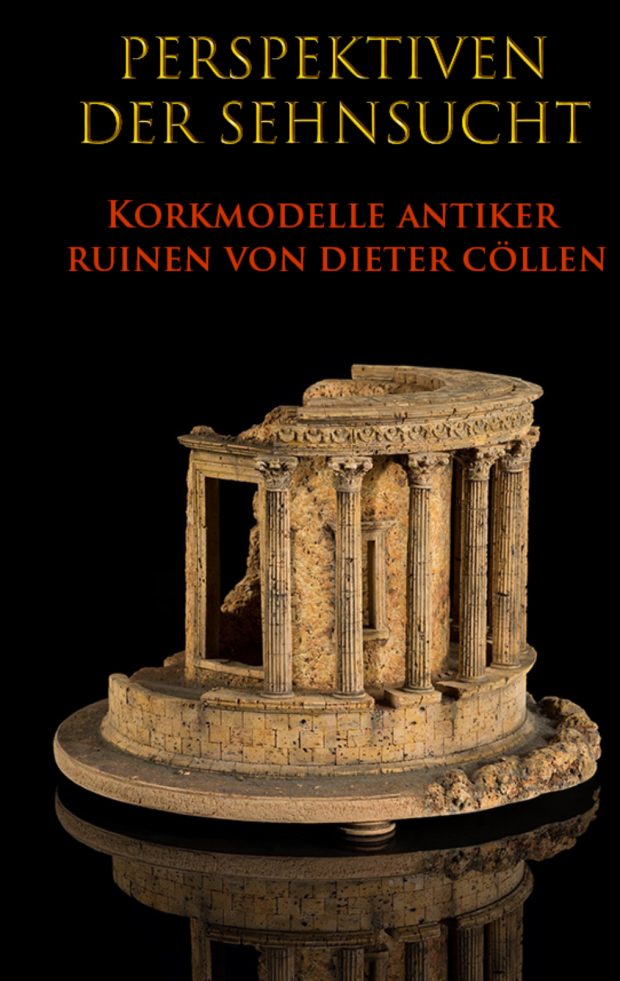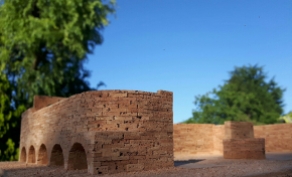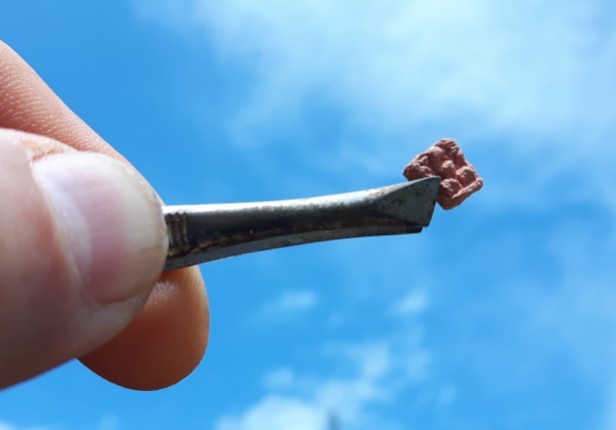
Dieter Cöllen


HOT SPOT
THE COLOSSEUM was certainly once one of the bloodiest spots in the world – we all know its history. However, its ruin gives us the opportunity to change our perspective and think about different aspects.
Dieter and Malgorzata decided to create a new cork model of this unique monument and integrate all their knowledge into the object, with the desire to offer the audience a wide emotional scope for reflection. Let’s see where the journey goes…




A NEW MUSEUM
is open to the public. 14 large cork models by Dieter and Malgorzata Cöllen can be seen in the architecture cabinet of the PASSAU STATE LIBRARY





SALVE ROMA
The cork model of the Pantheon in Rome will be presented to the public in the LINDENAU MUSEUM / ALTEBURG in the exhibition „SALVE ROMA“ from October 8th, 2023 to July 28th, 2024.

GOVANNI BATTISTA PIRANESI
and cork models by Dieter Cöllen and Malgorzata Lagan at AHLERS PRO ARTE with an excellent lecture by Dr. Phil.Vera Lüpkes VIDEO






Fotos: Dieter Cöllen, FichterArt

ARCHITECTURE CABINET
After completing the cork model of the , ARCH OF DRUSUS Dieter and Malgorzata integrated it into the architecture cabinet in the old Jesuit library in Passau – In good company…








THE ART OF RECONSTRUCTION
is the title of a workshop by Dieter and Malgorzata in the RAUTENSTRAUCH – JOEST – MUSEUM in Cologne. Using the example of the Temple of Bel in Palmyra, children will try to recreate the porticus of the temple from the remains of the destruction (here: cork fragments) and make the personal experience that destruction is easier to do than reconstruction. Dieter and Malgorzata give the children complete freedom in their work. Ibrahim and Rosslin from Syria are also there. They had to leave their country from violence, and now they feel like „ambassadors“ between cultures… Many thanks to everyone – we adults also learned a lot!!!









SYRIEN – GEGEN DAS VERGESSEN
The RAUTENSTRAUCH – JOEST – MUSEUM in Cologne is showing a unique exhibition on the great loss of Syrian culture in times of peace. The curator JABBAR ABDULLAH has spared no effort in bringing together artefacts, films and photos that have never been shown before. Dieter’s cork model of the TEMPLE OF BEL can also be seen here. The model was started a few days after its violent destruction in 2015 and completed a year later.





AGAINST DESTRUCTION
As we know, targeted activism is the best medicine for mental paralysis brought on by human stupidity… Inspired by their trip to Rome, Dieter and Malgorzata work diligently on the construction of the Pantheon. As the video shows, the shell of the model is almost complete. Fly with us and maybe enjoy the great architecture of the old masters, which can still bring us closer to the beauty of human creativity even after 2000 years…

THE PANTHEON IN ROME
For most people, the mere memory of visiting the PANTHEON in Rome arouses great emotional feelings, combined with a longing to return to this magical place. So why not bring the object to the viewer?! Dieter and Malgorzata will face this great challenge. They plan over a year to produce a cork model scale 1:50, which should also show the complete interior with its elaborate equipment. Let’s watch the two of them at work and follow the single steps of this forgotten craft until completion…




BACK TO THE FUTURE
A new designed building by the Berlin studio KAHLFELD ARCHITECTS is the base for the next cork model from Dieter and Malgorzata. The task is to turn the time further into the future and to capture the imaginary decay in maybe 2000 years – an interesting perspective from two points of view …






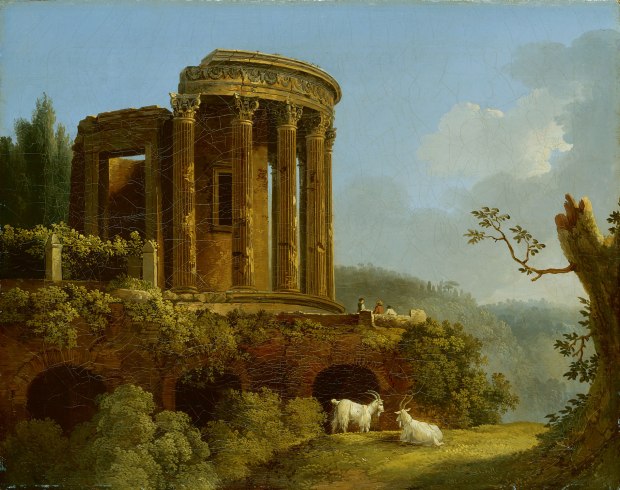
TIVOLI
Until today, the round temple of Tivoli is considered as the ideal of Romanticism for artists and architects. It was modeled in various interpretations by the grand masters of “phelloplastics” and carried across the Alps. Today Dieter and Malgorzata not only restore the few preserved objects, but they also create new cork models of the temple for various requirements. With this they not only keep a forgotten craftsmanship alive, but also try to redirect the viewer’s gaze to perfect proportions and beauty …

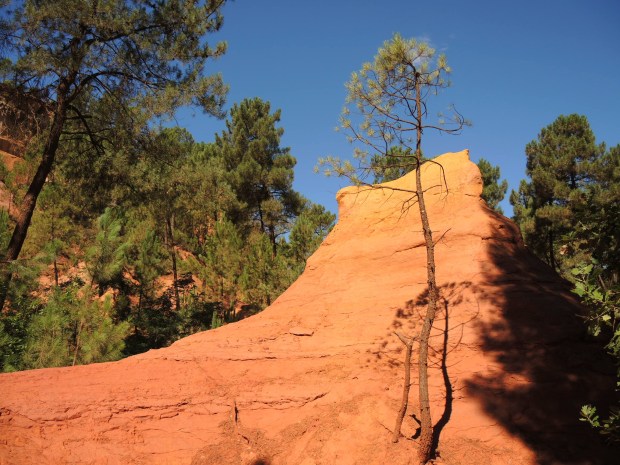
COLOUR
Malgorzata uses natural pigments from the ROUSSILLON in France, which can be found in the landscape there, for the surface of the model. This work takes a lot of time because the paint is applied in several layers in order to achieve the desired result. After that, the pillars must be fixed. A final „make-up“ follows to highlight the contours …




THE TIME OF PHARAOHS
Dieter’s cork model of the Great Pyramid has safely crossed the Atlantic … It will be on view in an exhibition at the Utah-Museum / Salt Lake City from May 20th, 2020 – January 2nd, 2021.
Exhibition title: EGYPT THE TIME OF PHARAOHS
“Let´s hit the dusty trail!”…


LIVING FOR BEAUTY
A new project by BEN PENTREATH poses a major challenge for Dieter and Malgorzata. They have to create an object of his design that touches the viewer’s emotions and shows that real beauty never dies. Cork seems to be the right material for this purpose. Let’s watch them at work …

PICTURE SHOW
Today Dieter and Malgorzata would like to invite you to a picture show of their cork models – have fun!
CORK MODELS OF ANCIENT MONUMENTS

THE PHAROS OF ALEXANDRIA
The cork model of the Pharos of Alexandria was built by Dieter in 2015 for an exhibition in the Kunsthalle Leoben / Austria, with the scientific support of Prof. Dr. Michael Pfrommer . Now an exhibition team is working on a new presentation. We are all very excited and will report on the development of the efforts on the blog …



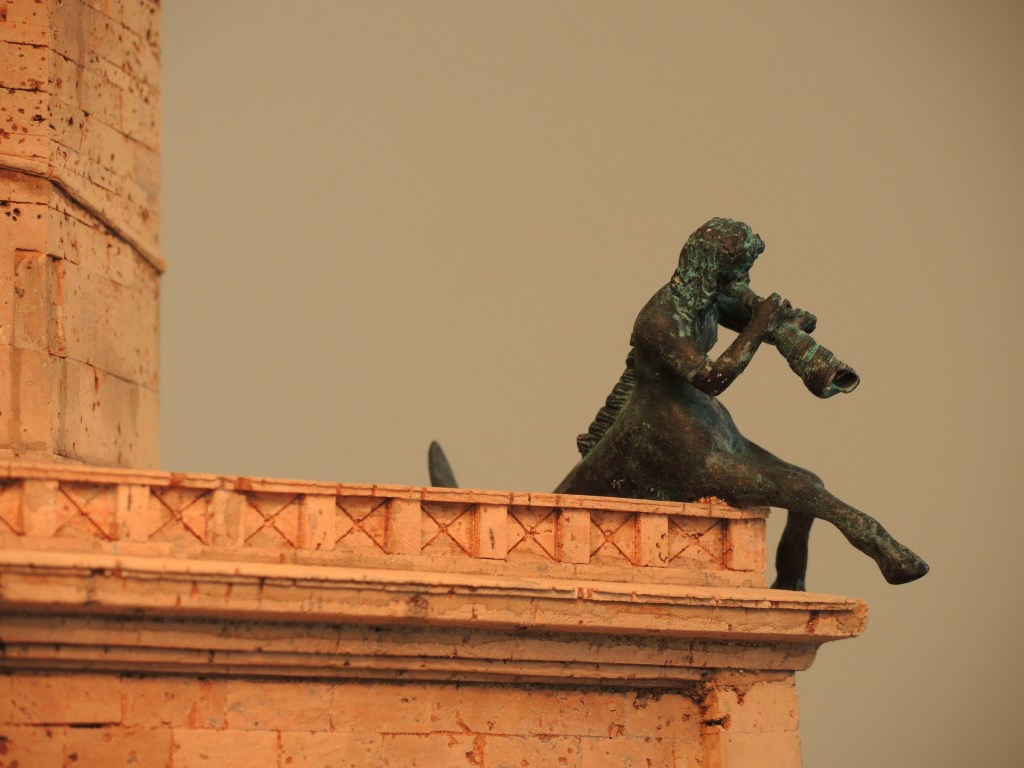









ARCHITECT OF RUINS
The current book with the cork models by Dieter Cöllen from the JEFF KLOTZ VERLAG in German and English
Why do ruins never cease to provide refreshing shade, despite of their turbulent past?
This question occupied my mind from a young age, when I was a boy searching for lizards in the cracks of ruinous walls. Fortunately, to this very day I did not receive an answer – instead, it inspired my curiosity, humbleness and dreams as well as the wish to erect a monument for these patient witnesses of deterioration.
“Quercus suber” (CORK OAK) made the realisation of these dreams literally “easy”. All the cracks, fractions and damages of stone are already inherent in the cork´s bark and invited me to uncover them.
It is a work against all reasons and custom, only focused on preserving the most authentic picture of ageing; to acquire and transmit a rare monument of undisturbed awe – because in the blink of an eye, it´s like nothing ever happened.

THE CITY
Ten years ago Dieter made a cork model of the „Casa del Menandro“ in Pompeii. Soon this object will be part of a spectacular exhibition at SMAC https://www.smac.sachsen.de/sonderausstellungen.html in Chemnitz …


TIVOLI
The Vesta Temple in Tivoli was a must for travelers on the „Grand Tour“ in the 18th century. It was, and still is, a symbol of Romanticism in painting and architecture. Dieter and Malgorzata have tried to capture this effect in a new cork model.

OPENING UP THE SOANE
The Sir John Soane’s Museum in London is one of the most beautiful and interesting museums in the world. Soane collected many cork models during his lifetime, which can still be admired today in a wonderful ambience. Dieter Cöllen had the honor of completing and restoring the famous „model stand“. Together with his friend Hannes Fischer and many other specialists he worked on completing Soane’s dream and living space. Here Dieter invites you to follow him at work in a VIDEO https://www.soane.org/collections/videos/creating-cork-architectural-model

BIRTHDAY
After all parts have been fixed in place and the pigment layers have been applied, Dieter and Malgorzata photograph the cork model in optimal daylight. The southern French evening sun, which brings the object to life in warm tones, is ideal for this purpose …


HEAVENS GATE
The cella is the sanctuary of the temple and was only accessible to the priests through a more than 6m high bronze portal. Dieter and Malgorzata try to reproduce the effect of this monumental entrance as precisely as possible. They do the same with the roof tiles…

STRAIGHT UP
The pillars of the temple are the supporting elements of its architecture. It takes a lot of time and precision to manufacture. Dieter and Malgorzata therefore work with the greatest care and patience…



WORKING OPEN AIR
Dieter and Malgorzata work on the columns in the warm French daylight of the Cahors region. A very meditative work …
Meditative work

MAISON CARRÉE UNDER CONSTRUCTION
https://de.wikipedia.org/wiki/Maison_Carr%C3%A9e
A new project is on the way to be realized. After Dieter has visited thewonderfully restored temple in Nimes, he starts building the cork model according to precise plans of the famous monument.

LIVING FOR BEAUTY
A new exhibit comes along at the https://museum-schloss-brake.de/sonderausstellung/ WESERRENAISSANCE-MUSEUM Schloss Brake / Lemgo, showing cork models of Dieter Cöllen beside the famous work of GIOVANNI BATTISTA PIRANESI

WAITING FOR A FRESH BREEZE
After Dieter has finished working on the cork model, 5000 bricks are waiting for a fresh breeze…










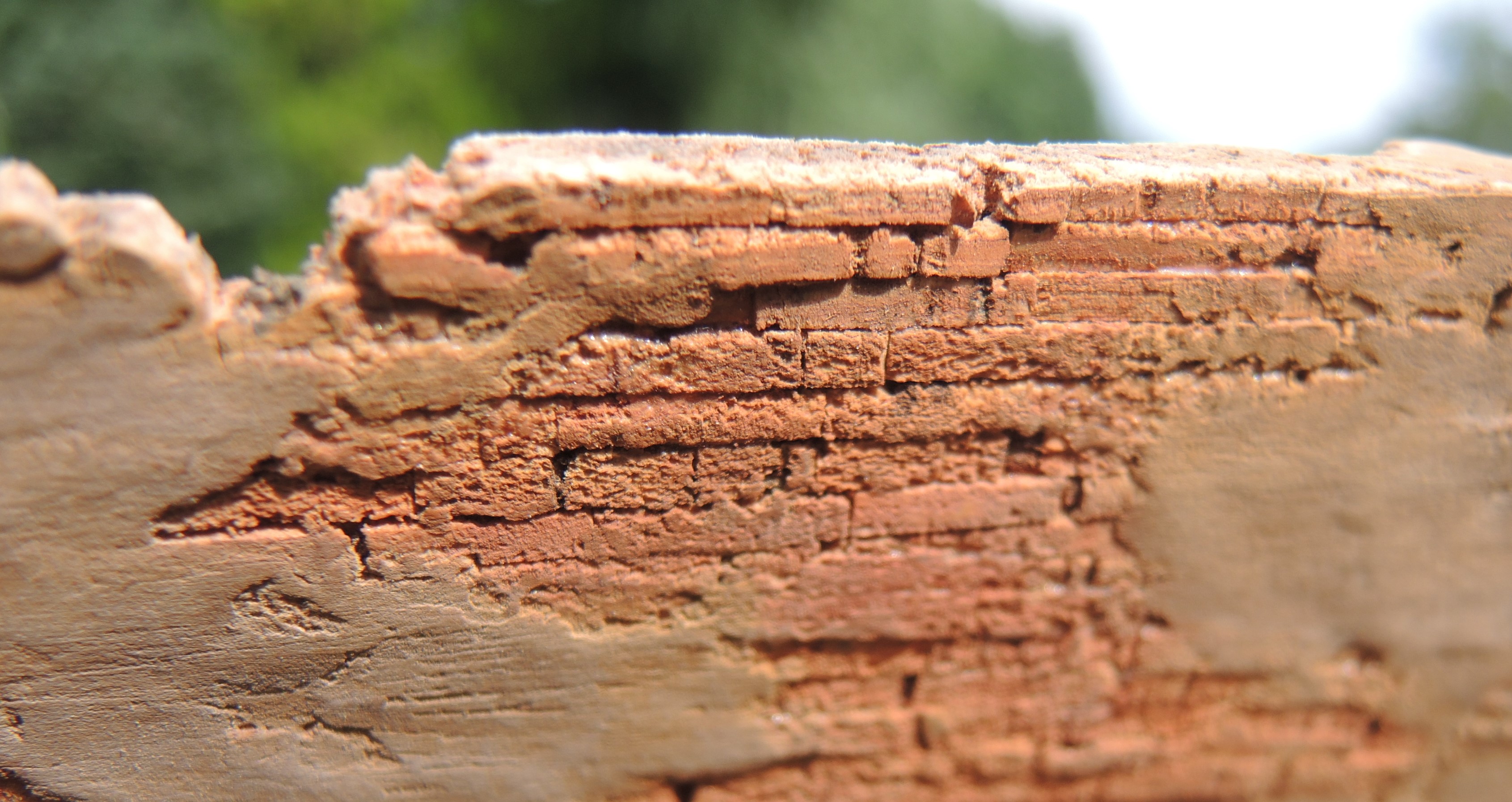
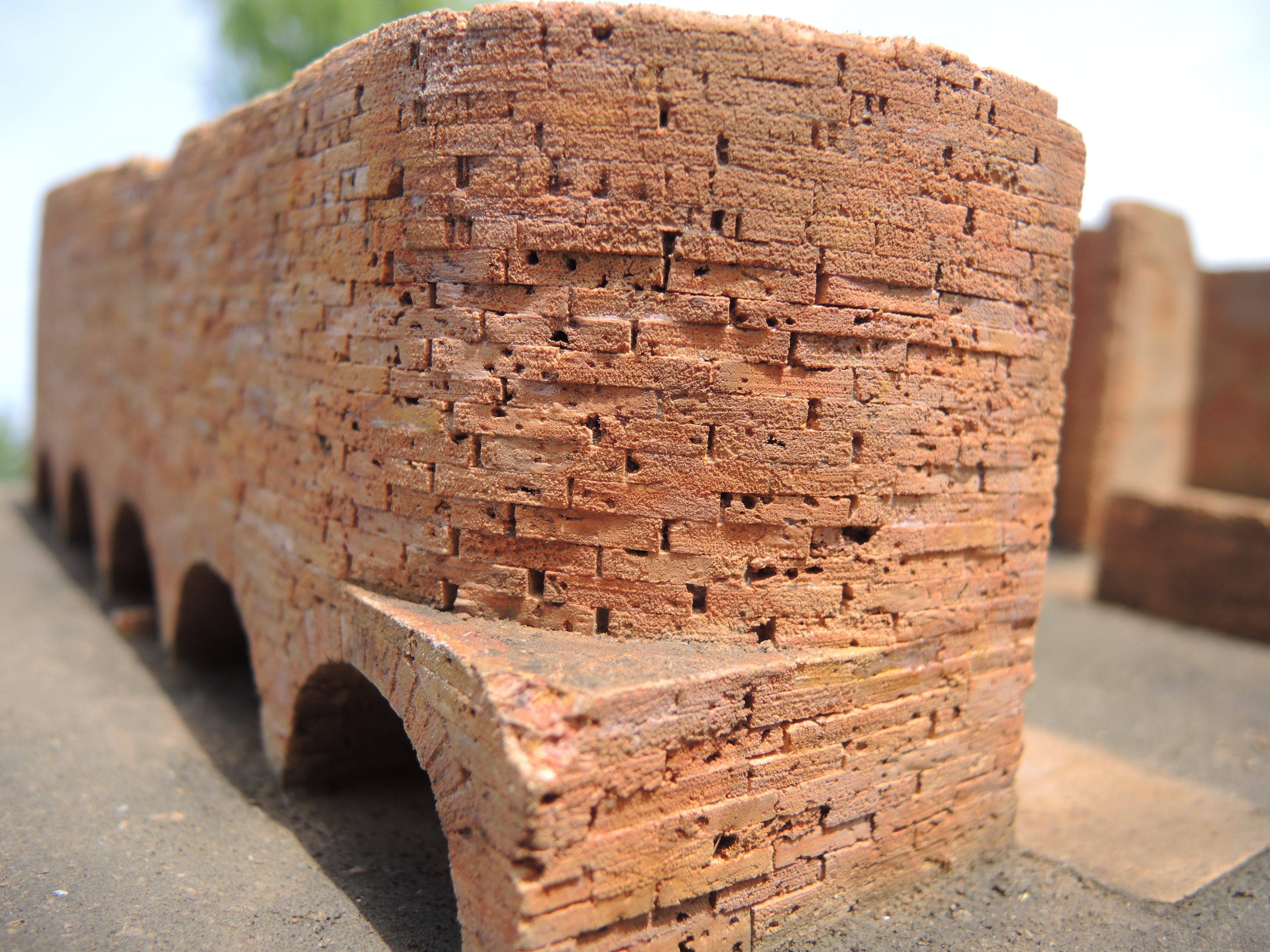





MAKE UP
After putting all parts together, Dieter and Malgorzata apply natural pigments, just as the old masters did …

AERODUCT
 Next to it Dieter builds another cork model of an antique aeroduct. The first visualization is created in collaboration with Florian Dombois…
Next to it Dieter builds another cork model of an antique aeroduct. The first visualization is created in collaboration with Florian Dombois…
AERODUCT
The ancient Romans are known for their viaducts, pathways, and aqueducts, watercourses, with which they directed and shaped spring water over many kilometres and led it into their cities. Similarly, aeroducts direct and shape the wind, while at the same time guiding it in a circle to study its behaviour. In aeroducts, phenomena such as thought resistance or torsional wind can be simulated and understood in order to, for example, optimise ventilation or underfloor heating in houses. The research facility is also suitable for extended contexts when, in urbanism (cf. Vitruvius‘ „10 Books of Architecture“), attempts are made to improve the human climate by intelligently setting building volumes and creating spaces in between. Today these facilities are called wind tunnels.
In the attached photos, an excavation site of such an aeroduct is reconstructed according to drawings by the artist Florian Dombois. Dombois himself runs a wind tunnel laboratory on the roof of the Zurich University of the Arts AERODUCT and realized, among other things, a wind tunnel for the Research Pavilion in Venice from found building materials from the lagoon. For the Day of the Monument in September 2020, he will realize an aeroduct as a 1:1 model made of mudbricks in Allschwil, Switzerland, together with Martin Burr and the Fachwerk Association.

BUILDING UP
After the columns have been finished Dieter and Malgorzata start modeling the architrave and its details…




THE FLUTING OF COLUMNS
The FLUTING of the columns is the next step in Dieter’s work. He engraves the cannelures by hand and uses special grinding tools for this purpose…

JUST A SOUVENIR
In the 18th century, a cork model of the Castor and Pollux temple in Rome was a popular sovenir for travelers of the „Grand Tour“
Today Dieter and Malgorzata create a new interpretation of this ruin scale 1:50. Let’s look over their shoulder at work …

It all starts with a solid foundation

LIKE A ROCK
The Pont du Gard is founded on solid rock. To visualize this perfectly in the model Dieter uses 9 years grown cork bark from selected oaks in Portugal. After gluing the cork 
 he will treat the material like a sculpture to imitate the beauty of nature as best as possible…
he will treat the material like a sculpture to imitate the beauty of nature as best as possible…

BRIDGE UNDER CONSTRUCTION
Like the ancient builders Dieter constructs the 52 arches of the Pont du Gard „stone by stone“…



LOVE-KNOWLEDGE-SUPPORT
With every new project Dieter is supported by many people in the background. First there are the cork workers in Portugal, who provide him with the best material. In Germany, he can rely on Mr. Engels for the woodwork with his knowledge and experience. Dieter himself fell in love with cork in 1962 – until today …



NEW PROJECT: PONT DU GARD
After completing the Coliseum, Dieter focuses his attention on an extraordinary Roman monument – the aqueduct PONT DU GARD north of Nimes. This cork model with a length of 2.75 m will be unique worldwide…



ULTIMATELY AT HOME
Together with other cork models, the Colosseum finaly finds its place in the STATE LIBRARY PASSAU

PLEASURE AND SADNESS

THE FINAL STEPS

CAPITALS

THE INNER STRUCTURES
The inner part of the Colosseum has cosmic dimensions. During the next days Dieter will build all the constructions for the audience tribunes that made the monument once to the biggest stadium at its time…

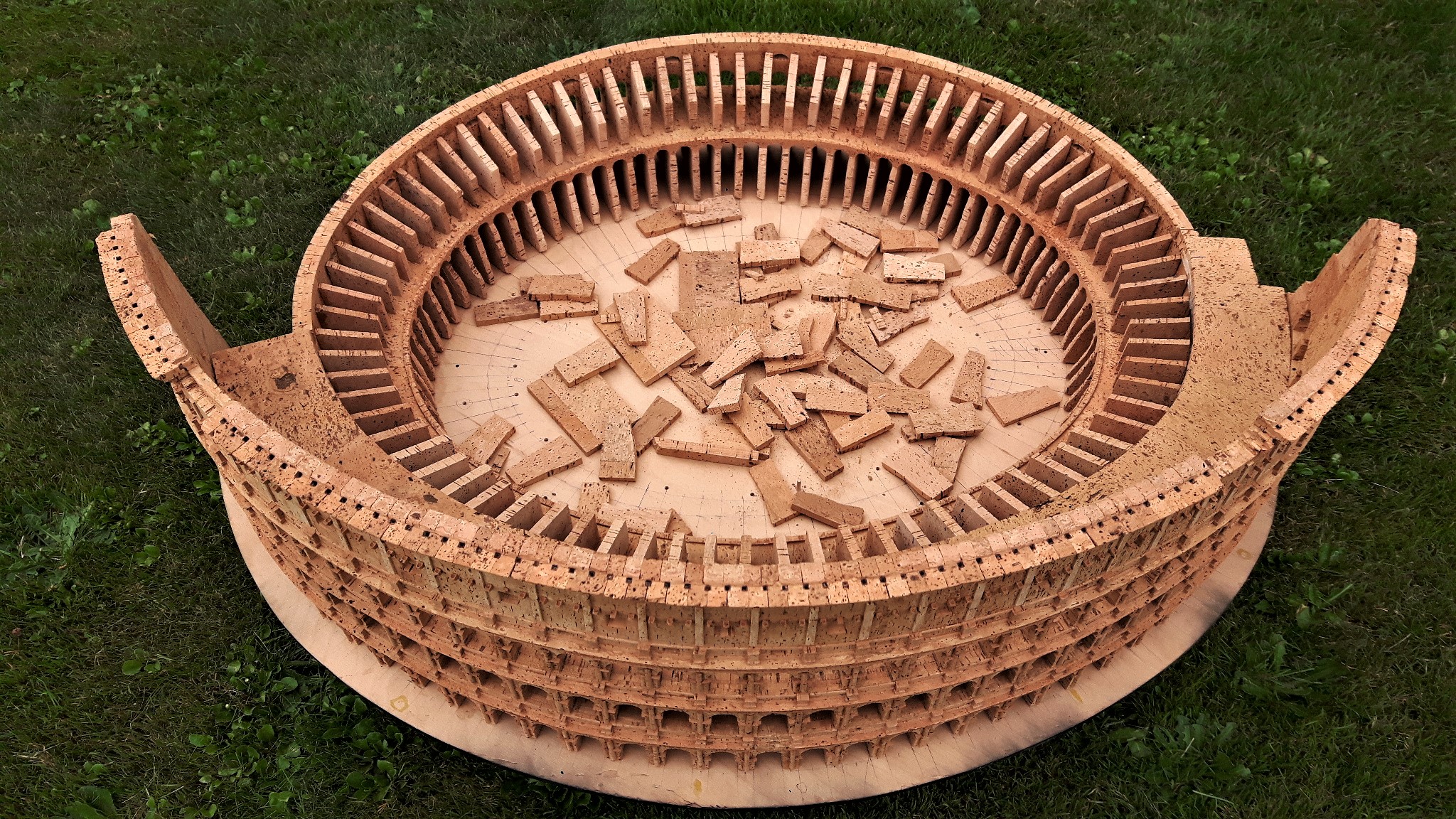


THE „NEW“ COLOSSEUM
Since Luigi Carotti built the last cork model of the Colosseum in 1840 nobody toughed that theme again. Today Dieter Cöllen decided to create another object of this incredible monument. He calls his project “Homage á Luigi Carotti” and wants to discover if his artwork can exist beside the quality of the ancient master. The audience is invited to decide…
After getting the plans Dieter starts first to form the oval walls of the Colosseum. Here you can see him working on that basic part. With the assistance of Malgorzata he builds the support structures…
